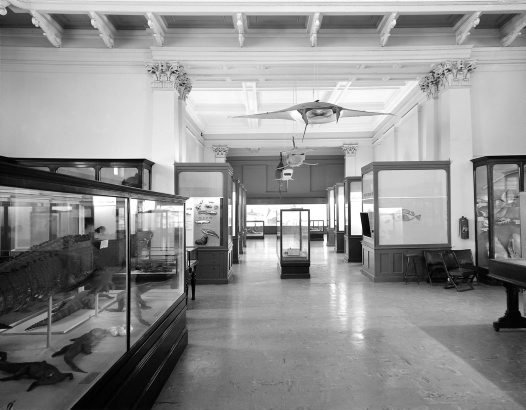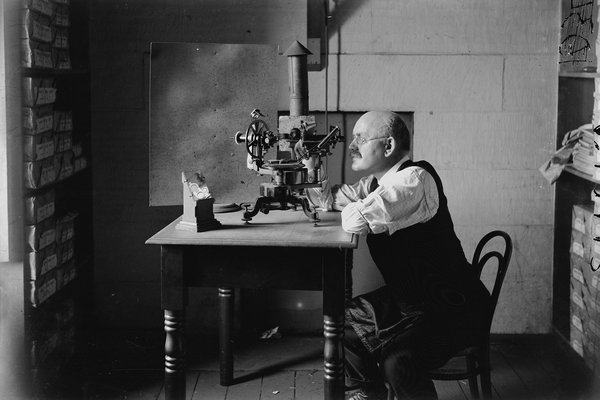Our oldest display case
Next week we begin a project to conserve and re-interpret the heritage crocodile case and its contents on Level 2.
Identified as a significant part of the Museum's built heritage and now part of the Archives heritage furniture collections, the case and its contents are the last example of what were once common showcases in early Museum display.
Here's a photo of the case as it was from about 1913 up until the 1950s. The snakes that now sit at the front of the case were moved into the case some time after this photo was taken, probably in the move to Level 2 in the 1970s. The sand that now coats the base of the case also appeared after the move.

© Australian Museum
Because of the significance, age and uniqueness of the case and its heritage contents, the project is unusually complex, involving close collaboration between Archives (case exterior and non-animal contents), Herpteology (specimens), Materials Conservation (conservation cleaning of crocodiles) and Exhibitions staff (case interior, reinterpretation and signage). Even the Webteam are getting involved in documenting the process for our website and in working out how to present information in ways other than traditional text panels.
Added to the adminstrative complexity is the size of the case (it can't be moved) and its location in a high-traffic area of the Museum, just outside the main lift and sitting between heavily-used Search and Discover and Kidspace.








